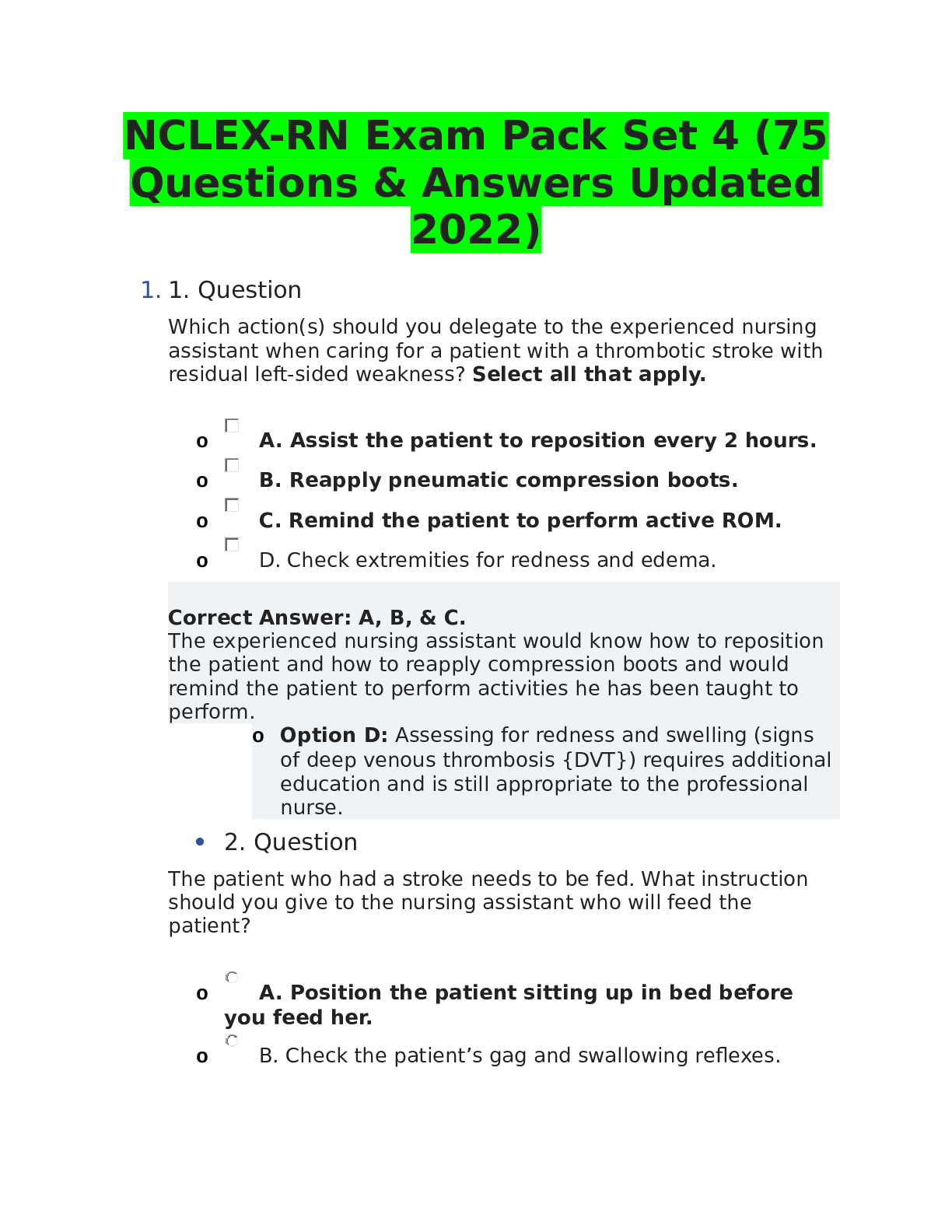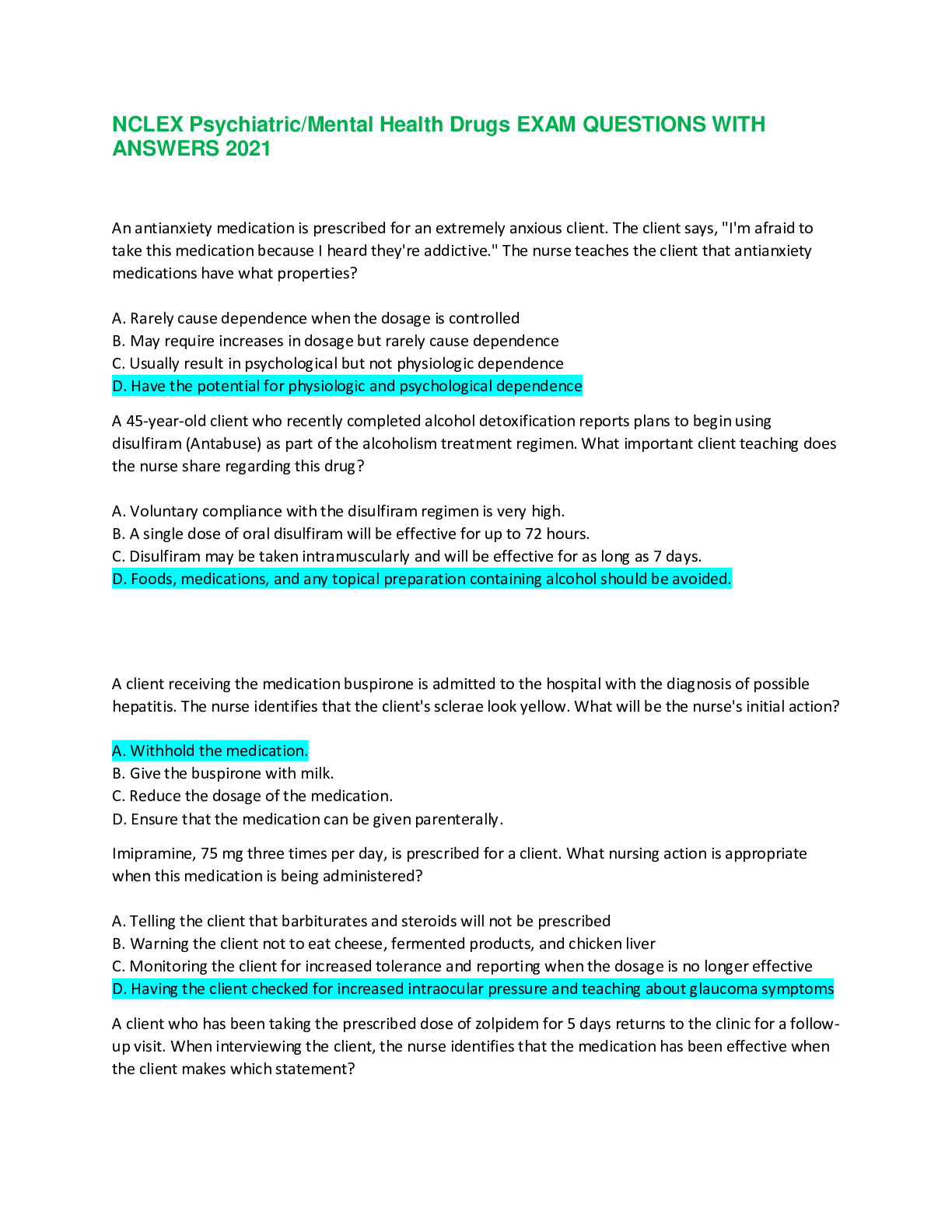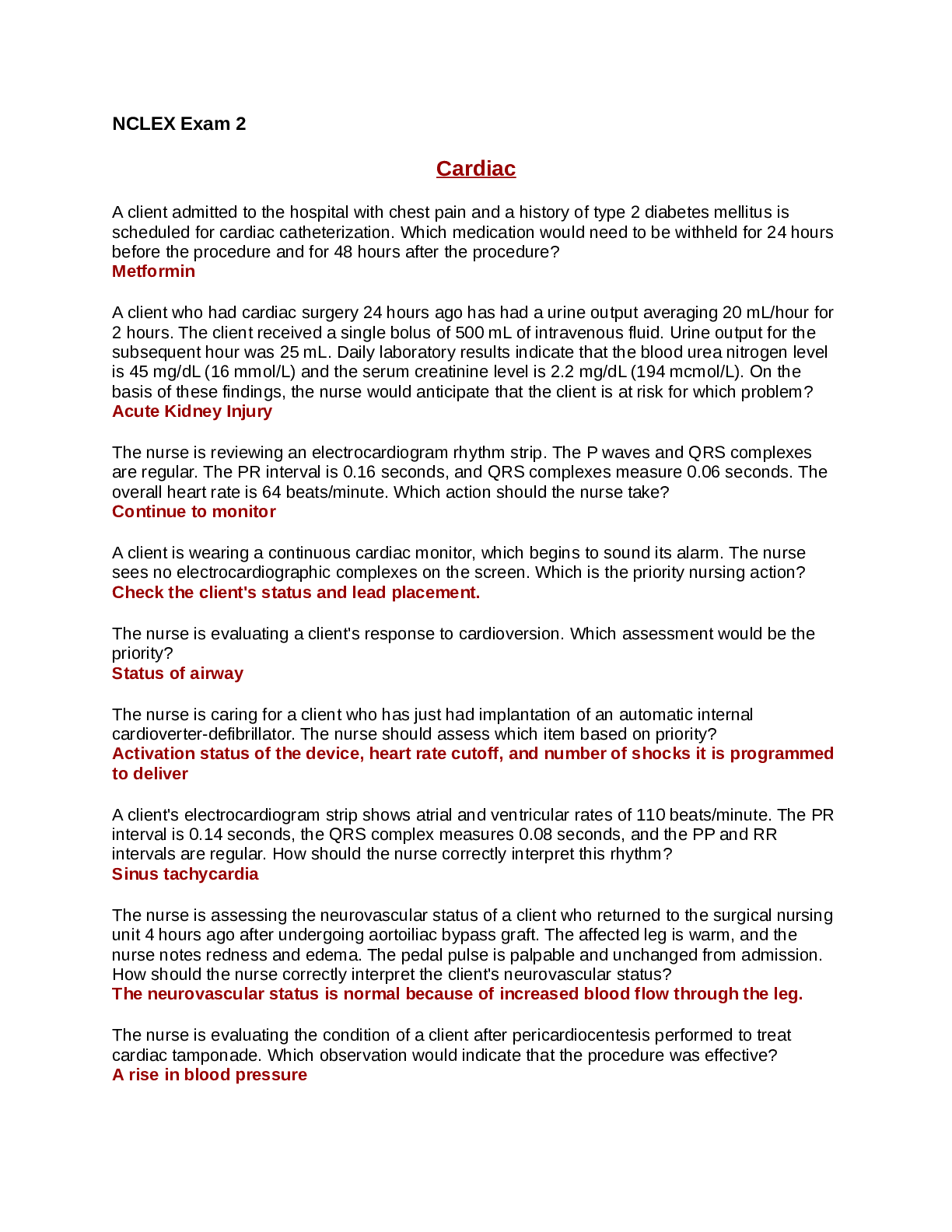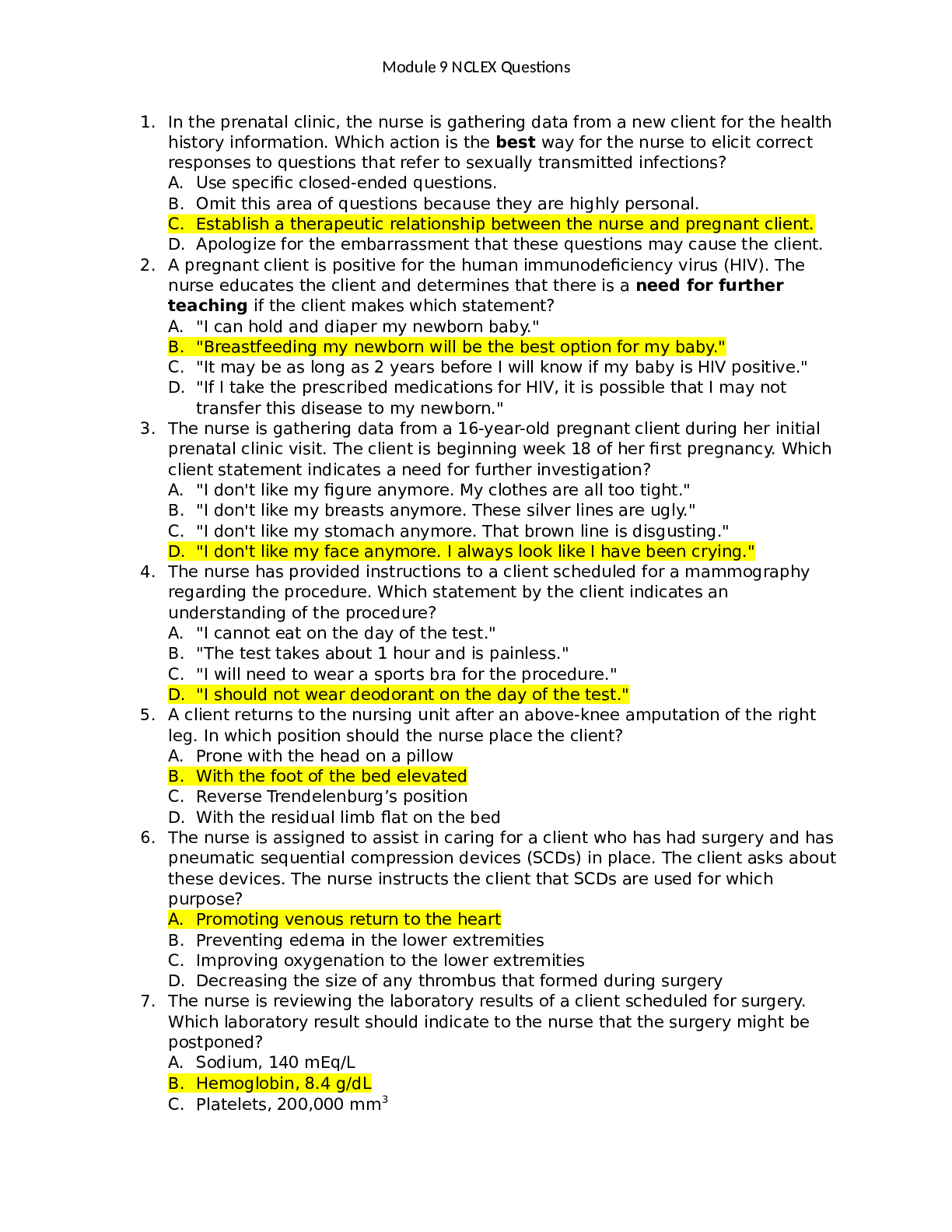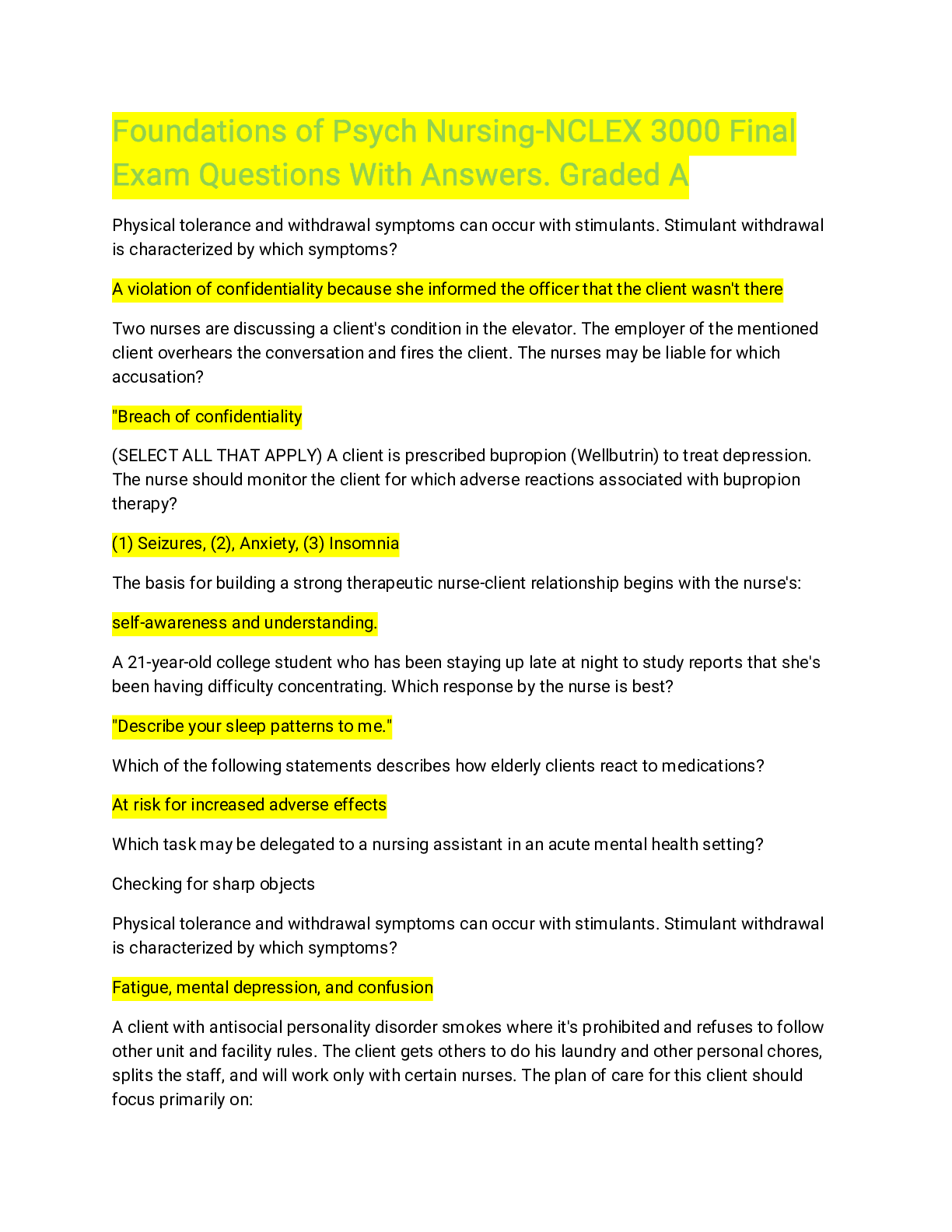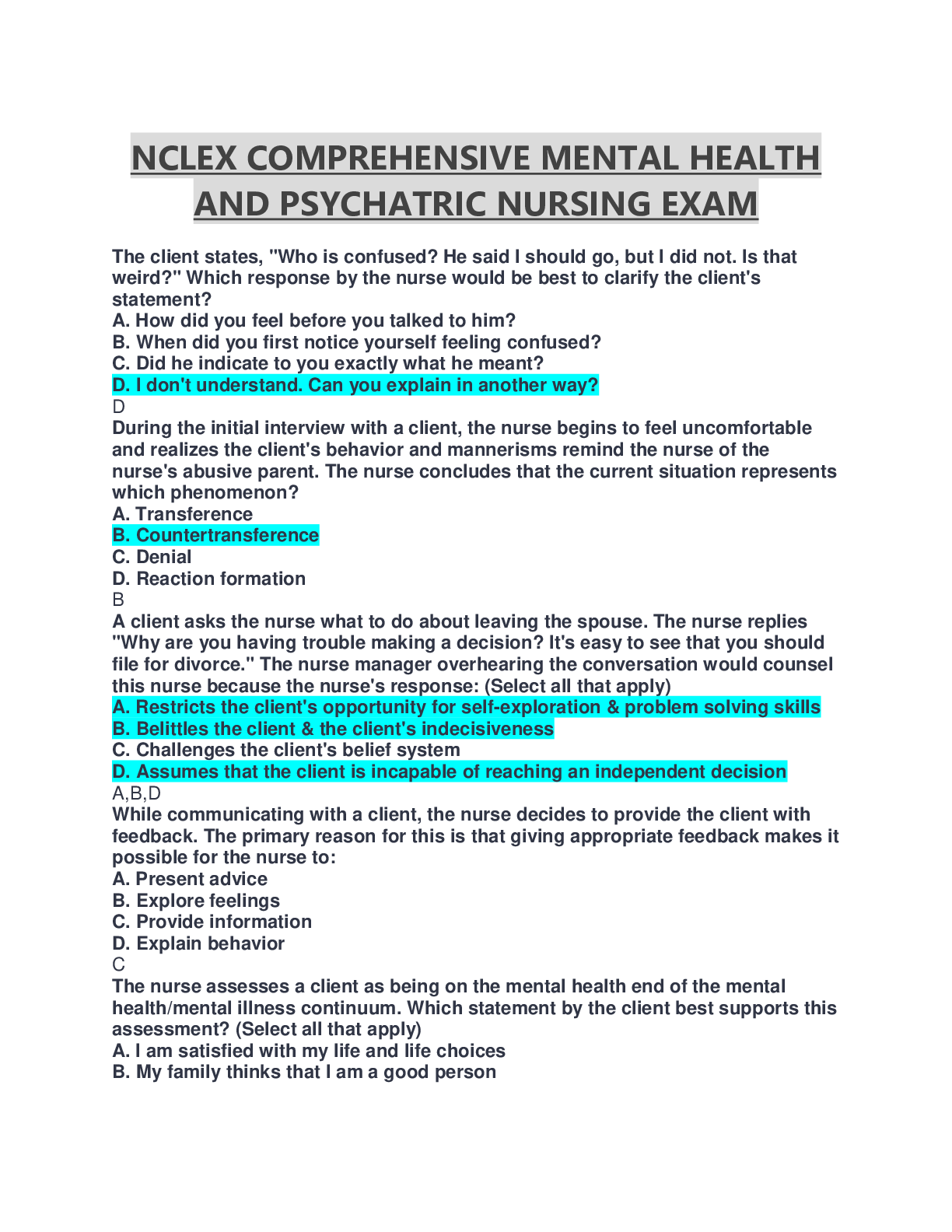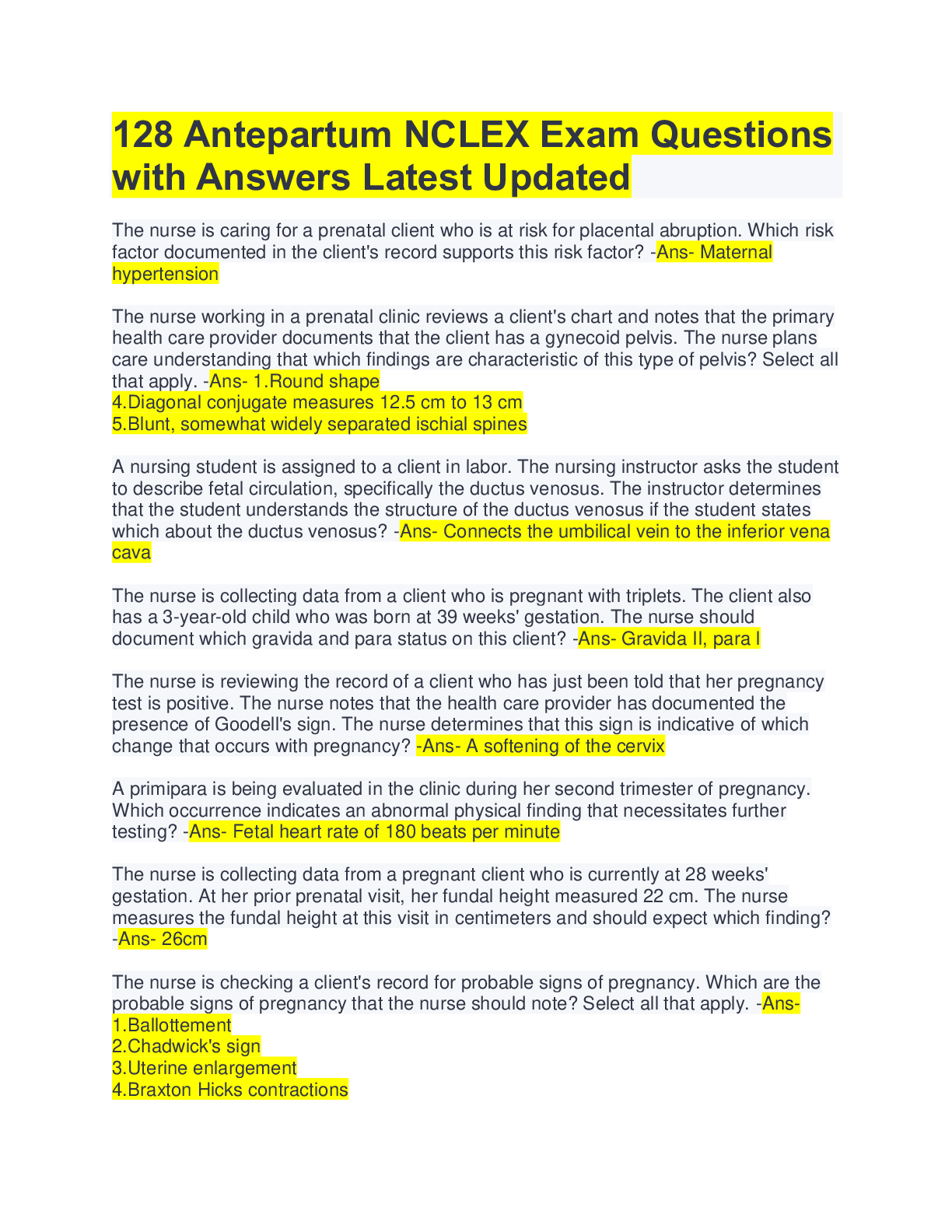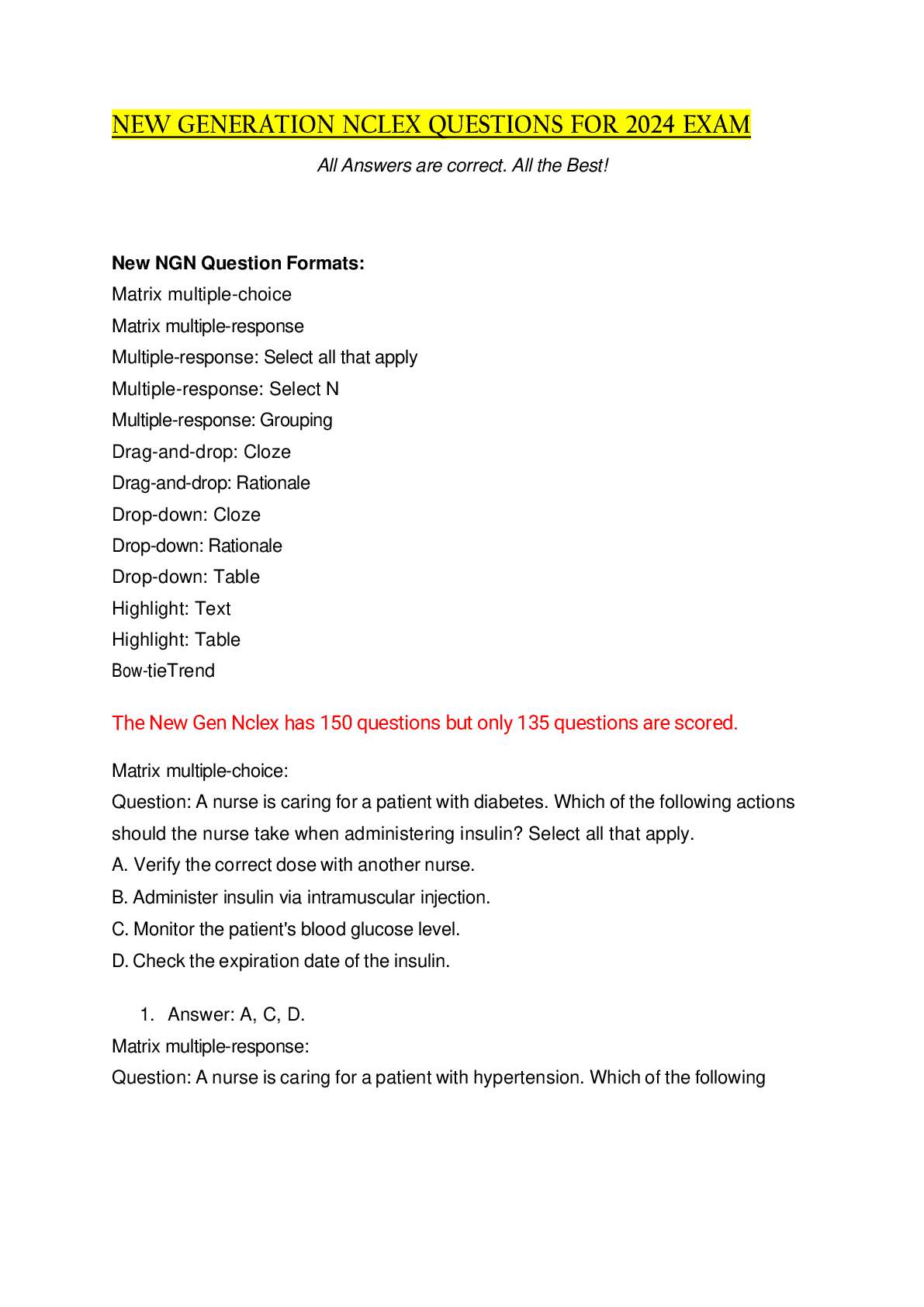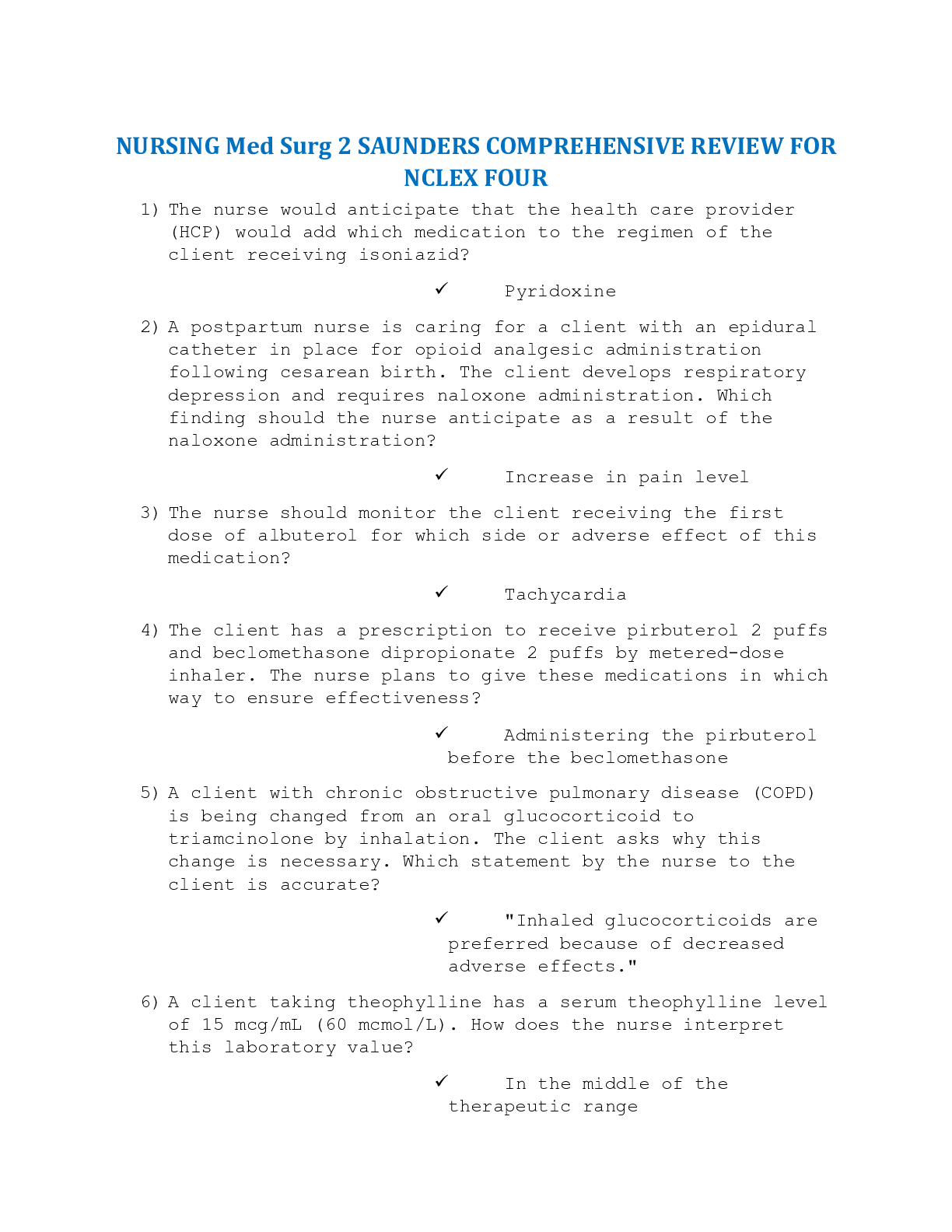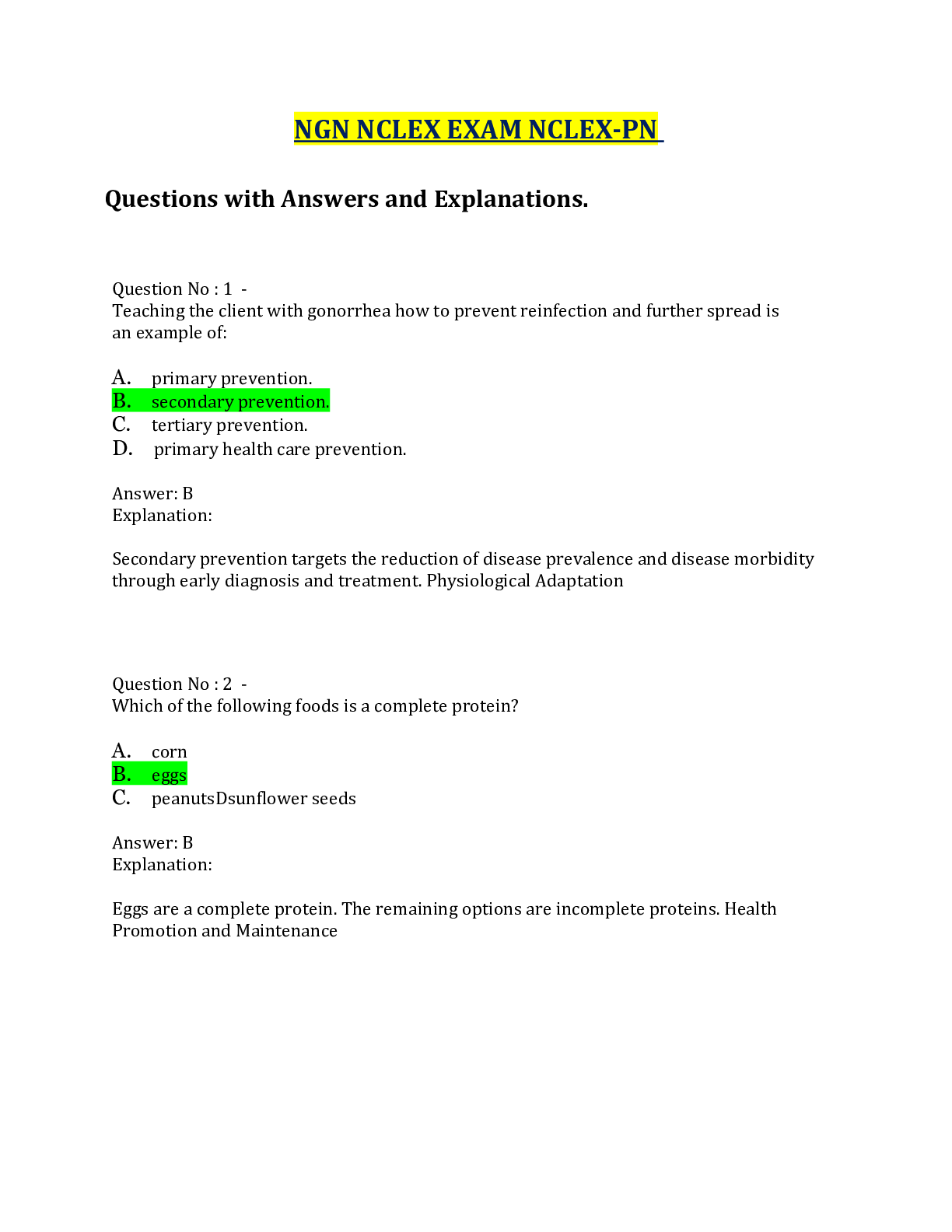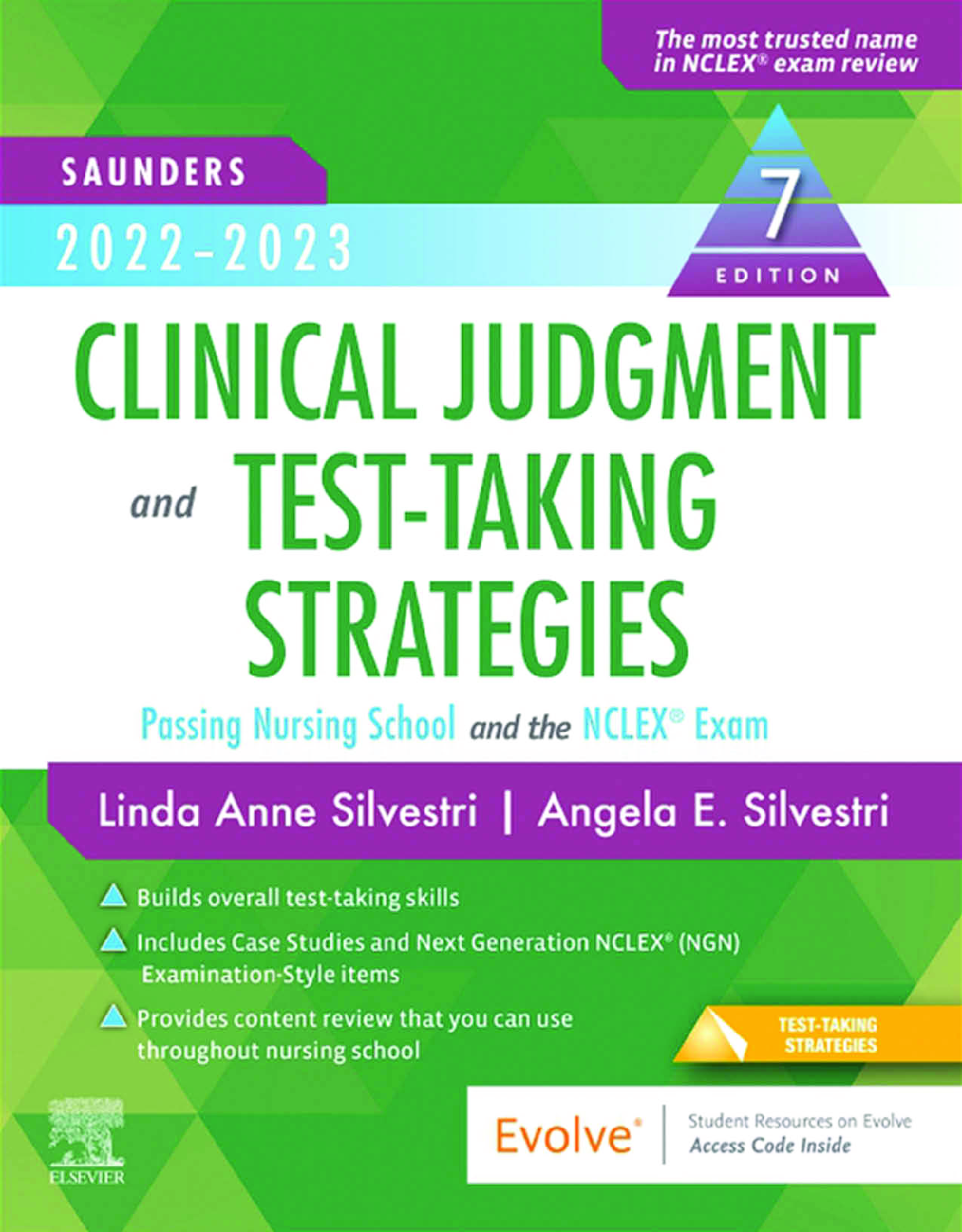Antepartum: NCLEX Exam Questions with Correct Answers
Document Content and Description Below
Antepartum: NCLEX Exam Questions with Answers A nursing instructor asks a nursing student to describe the procedure for relieving an airway obstruction on an unconscious pregnant woman at 8 months' g... estation. The student describes the procedure correctly if the student states to: -Ans- Place a rolled blanket under the right abdominal flank and hip area. (To relieve an airway obstruction on an unconscious woman in an advanced stage of pregnancy, the woman is placed on her back. A wedge, such as a pillow or rolled blanket, is placed under the right abdominal flank and hip to displace the uterus to the left side of the abdomen. ) The nurse is collecting data from a pregnant client when the client asks the nurse about the purpose of the fallopian tubes. The nurse responds to the client, knowing that the fallopian tubes: -Ans- Are where fertilization occurs (Each fallopian tube is a hollow muscular tube that transports a mature oocyte for final maturation and fertilization. Fertilization typically occurs near the boundary between the ampulla and the isthmus of the tube. The vagina is the organ of copulation, and the fetus develops in the uterus. Estrogen is a hormone that is produced by the ovarian follicles, the corpus luteum, the adrenal cortex, and the placenta during pregnancy. Progesterone is a hormone that is secreted by the corpus luteum of the ovary, the adrenal glands, and the placenta during pregnancy. ) A nursing student is assigned to care for an adolescent female client in the health care clinic, and the instructor reviews the menstrual cycle with the student. The instructor determines that the student understands the process of the secretion of follicle-stimulating hormone (FSH) and luteinizing hormone (LH) if the student states: -Ans- "FSH and LH are released from the anterior pituitary gland." (FSH and LH are released from the anterior pituitary gland to stimulate follicular growth and development, growth of the Graafian follicle, and production of progesterone. ) The nurse working in a prenatal clinic reviews a client's chart and notes that the health care provider documents that the client has a gynecoid pelvis. The nurse understands that this type of pelvis is: -Ans- The most favorable for labor and birth (A gynecoid pelvis is a normal female pelvis, and it is the most favorable for successful labor and birth. An android pelvis would not be favorable for labor because of the narrow pelvic planes. An anthropoid pelvis has an outlet that is adequate, with a normal or moderately narrow pubic arch. The platypelloid pelvis has a wide transverse diameter, but the anteroposterior diameter is short, thus making the outlet inadequate.) The client asks the nurse about the purpose of the placenta. The nurse plans to respond to the client, knowing that the placenta: -Ans- Provides an exchange of nutrients and waste products between the mother and the fetus (The placenta provides an exchange of nutrients and waste products between the mother and the fetus. The amniotic fluid surrounds, cushions, and protects the fetus and allows for fetal movement. The amniotic fluid also maintains the body temperature of the fetus.) The nurse is describing the process of fetal circulation to a client during a prenatal visit. The nurse tells the client that fetal circulation consists of: -Ans- Two umbilical arteries and one umbilical vein (Blood pumped by the fetus' heart leaves the fetus through two umbilical arteries. After the blood is oxygenated, it is then returned by one umbilical vein. Arteries carry deoxygenated blood and waste products from the fetus, and veins carry oxygenated blood and provide oxygen and nutrients to the fetus.) A nursing student is assigned to a client in labor. The nursing instructor asks the student to describe fetal circulation, specifically the ductus venosus. The instructor determines that the student understands the structure of the ductus venosus if the student states that it: -Ans- Connects the umbilical vein to the inferior vena cava (The ductus venosus connects the umbilical vein to the inferior vena cava. The foramen ovale is a temporary opening between the right and left atria. The ductus arteriosus joins the aorta and the pulmonary artery.) During a prenatal visit, the nurse checks the fetal heart rate (FHR) of a client in the third trimester of pregnancy. The nurse determines that the FHR is normal if which of the following heart rates is noted? -Ans- 150 beats per minute (Fetal heart rate depends on gestational age. It is normally 160 to 170 beats per minute during the first trimester, but it slows with fetal growth to 110 or 120 (low end) to 160 (high end) beats per minute near or at term.) [Show More]
Last updated: 1 year ago
Preview 1 out of 57 pages
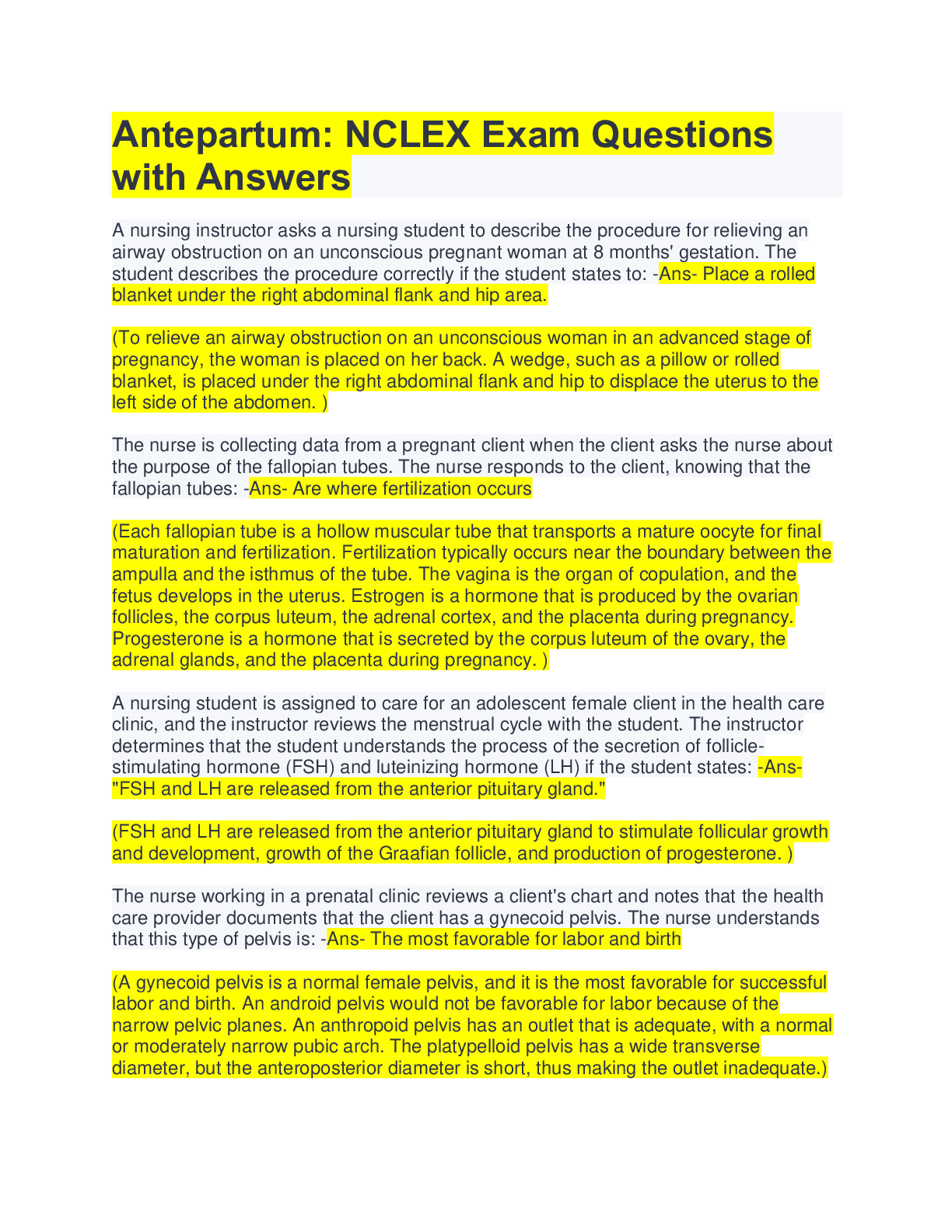
Reviews( 0 )
Document information
Connected school, study & course
About the document
Uploaded On
Oct 02, 2022
Number of pages
57
Written in
Additional information
This document has been written for:
Uploaded
Oct 02, 2022
Downloads
0
Views
47



